Ongoing training is an essential pillar of the skilled trades. Trades professionals who proactively engage with opportunities to learn about new processes and new technology deliver better experience and workmanship, make more educated decisions, complete more work in less time and establish trust with customers. In short, ongoing training helps create the right conditions for Read more
Featured Articles
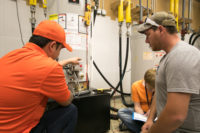
Ongoing training is an essential pillar of the skilled trades. Trades professionals who proactively engage with opportunities to learn about new processes and new technology deliver better experience and workmanship, make more educated decisions, complete more work in less time and establish trust with customers.
In short, ongoing training helps create the right conditions for positive business growth.
Unfortunately, for a variety of reasons, our industry has not traditionally made non-required continuing training a priority. Many skilled tradespeople are reluctant to pursue the opportunities made available by professional organizations, trade associations and manufacturers. Business owners and leadership teams often fail to invest in training for their technicians and office staff. Additionally, the current COVID-19 crisis has had an enormous impact on the nature of training in the industry.
Virtual training offers convenience and accessibility, but in-person, hands-on engagement has proven to be the most effective and preferred method of training for skilled trades professionals. While the best examples of virtual training can replicate some of the elements of live, personal interaction by providing opportunities for direct feedback and questions, the vast majority of virtual training options are pre-recorded. The effective elimination of live training by safety concerns, travel restrictions and social distancing is yet another huge COVID-19-related challenge our industry faces.
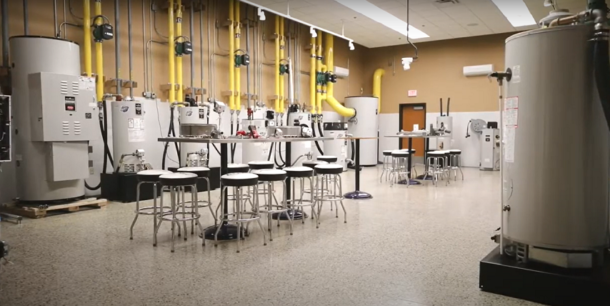
What training is and isn’t
Our industry may be short on training, but we use the word a lot. In fact, it’s one of the most overused terms in the skilled trades professions, primarily because we apply it to many things that aren’t training.
Training is not just information sharing. Training involves both the sharing of information and action.
When you’re weight training, you don’t watch it on a screen. You might review proper form and execution, but weight training is an action. It’s exactly the same for professional technical training in the trades. Training involves watching and then doing, learning through hands-on experience. Many people have pursued a career in the trades because they like to work with their hands and learn by doing.
Many trades professionals have demonstrated initiative and embraced the virtual training that has sprung up in the last year. Video tutorials and webinars have value in introducing technicians to new equipment, processes and concepts, but that’s only half of the full training experience. Following up virtual training with hands-on practice is essential for fully translating information into actionable skill. As the pandemic slows, expect in-person training to boom as agents look to validate the practices and concepts seen on the screen. Trades people are looking forward to mixing it up, getting back to their roots and making things happen.
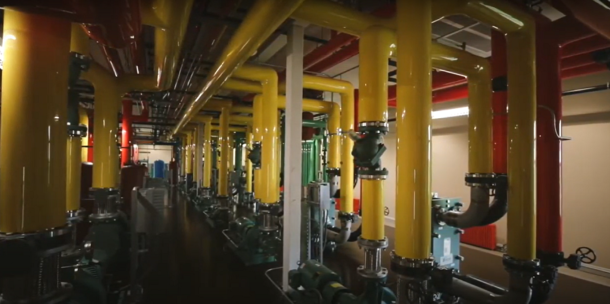
A “traditional” industry
If you surveyed the skilled trades right now and asked what the biggest barrier to training is right now, most professionals would say they’re too busy and don’t have enough people. It’s true that the labor shortage is a lasting challenge, but there may be deeper reasons for training hesitance.
In my early days as an HVAC technician, I learned the ropes working with a specific manufacturer. I was loyal to that manufacturer, but I had less confidence working with other companies’ products. We do what we know how to do. A related fact is that we don’t like to admit to ourselves or others what we don’t know or are unsure about. Many people in today’s world, not just in the skilled trades, feel incredible pressure to already know everything they need to know.
In the trades, an unfortunate result is that too many professionals wrongly calculate that by exposing themselves to training, they’re also revealing what they don’t know. Getting them to understand that it’s OK not to know something is a major obstacle for trainers and business owners.
Many trades people value their personal experience in the industry over formal ongoing training. While experience on the job is critical, so is continuing engagement with new technology and processes.
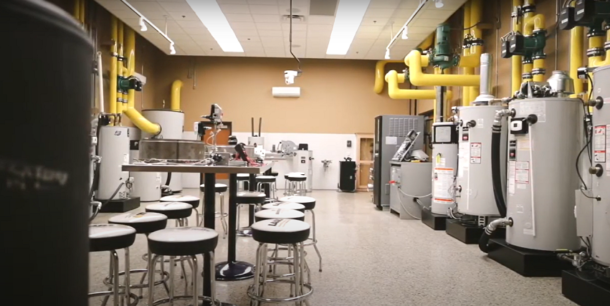
The critical carrot
We know why training is important. We know what it can be worth. How do you convince the industry to commit to training as a critical element of our industry?
You have to have a carrot.
There has to be something at the end that makes it worthwhile, whether it’s recognition within the company, financial reward or added benefits. The difference in experience and training is reflected in the different labor rates for a master plumber and a journeyman. The recognizable difference in skills and knowledge typically sets a master apart.
The more relevant the carrot is to the training, the more effective it will be in the long run. More training can put a technician in position to earn more money as a local expert, and that’s a gift that keeps on giving.
Confidence is at the very top of the list of advantages resulting from quality training. When technicians have a solid foundation of up-to-date skills, customers end up paying for service they’re satisfied with. Confident techs deliver better experience and build relationships.
The better trained a contractors’ team is, the fewer mistakes they’ll make. With training, techs work more quickly and more accurately and in the end are more cost effective.
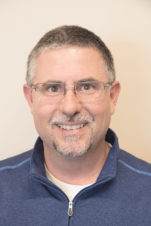 Dustin Bowerman is director of corporate training and product support for Bradford White Corporation, a full-line manufacturer of residential, commercial and industrial products for water heating, space heating, combination heating and storage applications. For more information, visit www.bradfordwhitecorporation.com.
Dustin Bowerman is director of corporate training and product support for Bradford White Corporation, a full-line manufacturer of residential, commercial and industrial products for water heating, space heating, combination heating and storage applications. For more information, visit www.bradfordwhitecorporation.com.
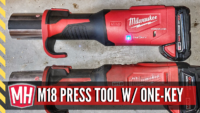
https://youtu.be/Il6vlVrsmQA Milwaukee has added to the FORCE Logic family with the addition of the M18 Press Tool w/ ONE-Key 2922-20. The standard size press tool is available now as a kit and bare tool. The M18 FORCE Logic press tool w/ ONE-Key is compatible with over 20 fitting systems. Typically called a “ProPress” tool [a Read more
Milwaukee has added to the FORCE Logic family with the addition of the M18 Press Tool w/ ONE-Key 2922-20.
The standard size press tool is available now as a kit and bare tool. The M18 FORCE Logic press tool w/ ONE-Key is compatible with over 20 fitting systems.
Typically called a “ProPress” tool [a brand or trademarked name owned by Viega] the M18 is fully capable of pressing up to 4″ copper pipe and iron pipe fittings of various manufacturers.
In the video above Eric Aune shows the new press tool next to its brushless predecessor, the 2773-20 M18 FORCE Logic press tool.

When I asked Sean Debnath, VP of Sales and Marketing, Viega, about the short-term economy earlier this year, he said, “The uptick in business that we all experienced gradually through Q3 and Q4 of 2020, seems to be continuing in to Q1 2021. But we choose not to take that trend for granted with all Read more
When I asked Sean Debnath, VP of Sales and Marketing, Viega, about the short-term economy earlier this year, he said, “The uptick in business that we all experienced gradually through Q3 and Q4 of 2020, seems to be continuing in to Q1 2021. But we choose not to take that trend for granted with all that is happening around us, and deal with it a month and a quarter at a time. Viega has taken steps with frequent testing and tracing to ensure we keep our factories and distribution centers running.”
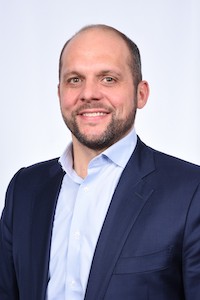 Through all of this uncertainty and one month-at-a-time mentality, making the transition to a new CEO can be difficult enough. But through a pandemic? Mechanical Hub recently talked with Viega’s new CEO, Markus Brettschneider, about his vision for the company, and navigating through these uncertain times.
Through all of this uncertainty and one month-at-a-time mentality, making the transition to a new CEO can be difficult enough. But through a pandemic? Mechanical Hub recently talked with Viega’s new CEO, Markus Brettschneider, about his vision for the company, and navigating through these uncertain times.
MH: How has Viega navigated through the pandemic and what does the path moving forward look like as we start to normalize?
Brettschneider: Since the beginning of the pandemic, the health and safety of our people has come first. We put into place regular testing and safety measures at the facilities where in-person work was required. Moving forward, health and safety will continue to be our focus. Our other big focus is our customers, and we have done all we can to keep production and distribution as normal as possible. With all of the challenges in the logistical side, it’s a tense period. But we haven’t shied away from spending money to keep things running smoothly. We hope in the coming months to get colleagues back to the office and find new ways of working in various setups. We very much look forward to meeting our customers once again face-to-face, while at the same time being very careful and keeping everyone safe. So far this year, the outlook is positive.
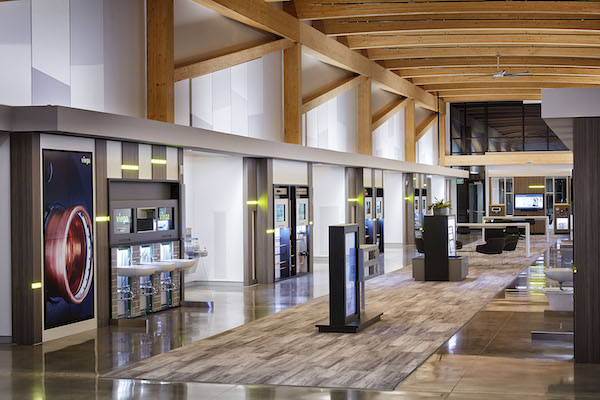
Viega’s interactive displays in Broomfield, Colo.
MH: Has the company learned anything during the pandemic that will be implemented more into the business plan (virtual trainings, less travel, etc.)
Brettschneider: I think we have learned that virtually, a lot is possible. There are even certain benefits when it comes to training as well as new ways of engaging with customers. It will be interesting to see how things like trade shows and other events evolve in the future, but in 2020 we reallocated most of those funds into other channels to make the most of what we could. We didn’t cut any funding. Instead, we trained our own people to be capable in this digital environment, and have excelled with virtual education and customer events. We know there have been changes in buying behavior in the past year, and we remain open to this ever-changing business landscape.
MH: What are some of your top initiatives for the company?
Brettschneider: Our biggest priorities right now are safety and supply to the customers. We’re looking at things like raw materials, logistics and the availability of workforce. We are continuously investing in our company footprint through automation, digitization and robotization. This is all important to help drive growth with our customers. We also know how important it is to invest in virtual and online marketing, as well as launch additional customer training activities.
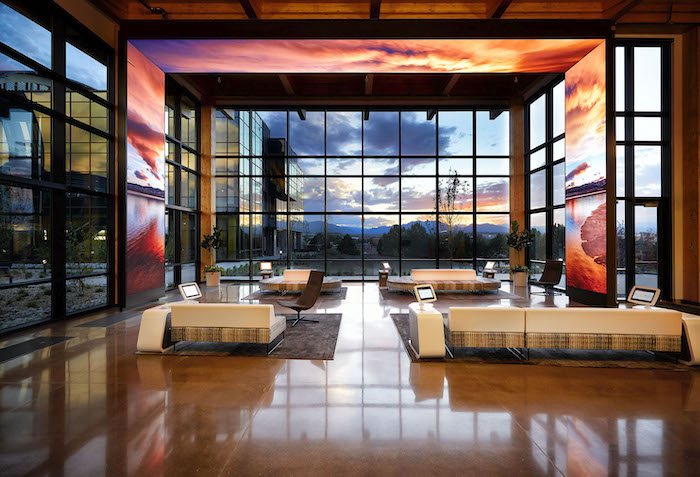
Viega’s Seminar Center in Broomfield, Colo., comes with a view.
MH: What has impressed you the most since joining the company?
Brettschneider: The people—our colleagues, the customers and the Viega family ownership. I’m extremely impressed with the products as well as the relationship we have with our customers and the opportunity to grow in our space. I’m also impressed with the commitment of the Viegener family to the company globally as well as its strong commitment to Viega LLC (the North American market) specifically. I’ve found the company is willing to constantly invest in order to grow the business, and the ownership’s passion and commitment is impressive.
MH: Explain Viega’s commitment to the supply chain and wholesale channels.
Brettschneider: We have proven our commitment to the supply chain, especially over the last few years . During that time, we grew the manufacturing and distribution presence in McPherson, Kansas, and we invested heavily in the workforce within the supply chain. We hired additional people to ensure our commitment in the U.S. is as strong as it always has been, and will continue. It’s important for us to invest for continual growth, and we know that our distribution and logistical centers are a key part of the business.
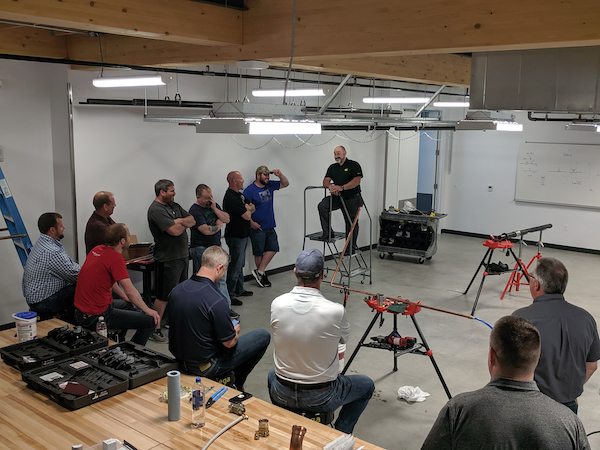
Training is paramount with Viega, and getting contractors back into the facilities, safely, is the goal.
A good example of our commitment was after the record cold snap in Texas and other southern states. We prioritized shipments and looked at unique ways to get products to the area that was so desperately in need of help. We are eager to work with our partners to drive growth, and are currently adding points of distribution throughout the U.S. We are a strong believer in wholesaler business and remain absolutely committed to our wholesaler distribution setup.
MH: What are some things you’ve learned throughout your career that will help you in your new position?
Brettschneider: Simply put, there is nothing more important than your own people and building great relationships with customers. Those ideas are central to a successful business.
MH: How do you see the short-term economy?
Brettschneider: Between the Covid relief package, some of the American population having more disposable income than ever, lower fixed-interest rates and potential infrastructure packages, we’re optimistic. We’ll see bumps here and there, I’m sure, because of the uncertainty of a global pandemic, but the fast-pace rollout of the Covid vaccination is giving us all a more positive outlook for the short-term U.S. economy.

A McPherson, Kansas, facility.
MH: Provide an update of the McPherson locations — expansions, new innovations, etc.
Brettschneider: We have invested heavily in that location over the past few years, in both infrastructure and people. This year we are focused mostly on hiring people. It’s important to recognize we are investing not to just maintain, but to grow. Our plan has been to build for significant growth so that we are ready when there are sudden spikes in demand (such as the Texas cold snap). In terms of infrastructure, the expansion in logistics was completed early in 2020 and is fully operational. The new ProPress building is completed, with some machines in operation, while others will be arriving later this year (delayed due to Covid).
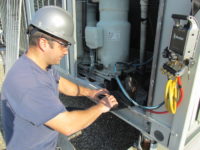
Businesses can cut costs and consume energy more intelligently by making a few smart changes with their HVAC system retrofits, upgrades and other carbon footprint programs. Over the years, our team at Atlantic Westchester, Inc., has developed programs to offer continuous energy monitoring services to optimize HVAC system performance and ensure that many aspects of Read more
Businesses can cut costs and consume energy more intelligently by making a few smart changes with their HVAC system retrofits, upgrades and other carbon footprint programs. Over the years, our team at Atlantic Westchester, Inc., has developed programs to offer continuous energy monitoring services to optimize HVAC system performance and ensure that many aspects of energy consumption in buildings are addressed.
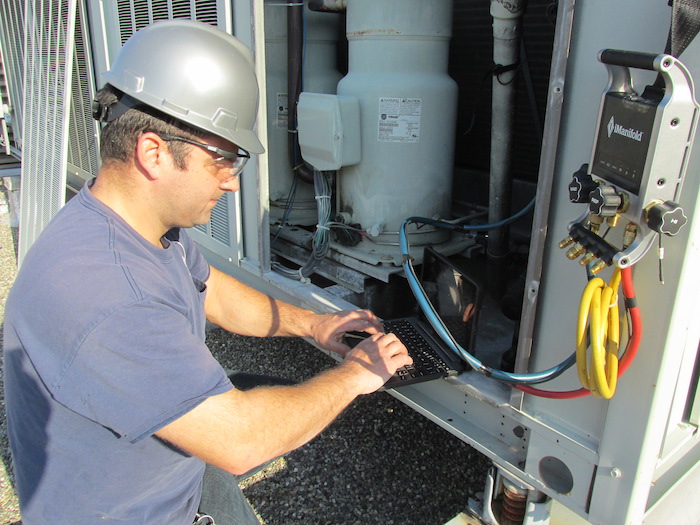
Below, are some tips on how to consume energy intelligently which will lead to saving money in the long run:
1) Companies can consume energy intelligently with their HVAC system
HVAC systems in typical commercial buildings can be responsible for up to 41% of total U.S. energy use, according to the U.S. Dept. of Energy’s Office of Energy Efficiency and Renewable Energy—so keeping those systems running at peak efficiency is key to managing your energy usage and cost. To consume energy intelligently, buildings can raise or lower the thermostat two degrees, or as much as comfort allows, to reduce HVAC system run time. Tax and utility incentives are available to help offset the cost.
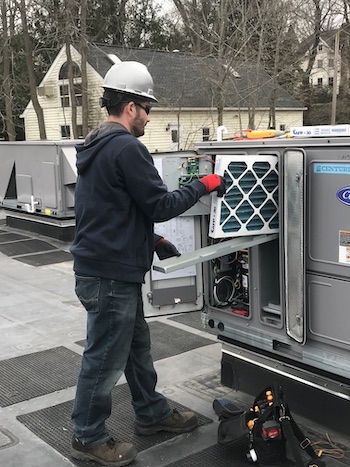 2) Maintaining a building’s HVAC system is important
2) Maintaining a building’s HVAC system is important
Clean, well-operating systems will provide reliable, efficient service during the extreme weather days. Dirty or old, worn out systems will breakdown more often and continually become less efficient with age. Dirty equipment will also have a direct effect on your utility bill as the cost to operate will be higher. Performing a continuous professional and periodic maintenance ensures that the equipment is clean and running at optimum levels.
3) Implementing LED lighting is a quick solution to save energy
LED lighting technology has come a long way in the last few years and the cost to implement has dropped substantially. The replacement lights operate at a cooler temperature than the lights they replace thereby reducing the heat load during cooling season. By implementing LED lighting in offices, companies will reduce their energy costs immediately. Adding LED lights in an office is quick and simple to calculate saved energy consumption. According to Energy Saver, the U.S. Department of Energy’s (DOE) consumer resource.
4) Adding solar panels will reduce electricity consumption:
Installing solar panels to a building are an excellent addition if space and layout is favorable. Tax rebates and utility incentives have made it such that installing solar system can be very cost effective. By adding solar panels, the building will generate supplemental electricity allowing the average cost per kilowatt to decrease.
Each building situation is unique, so we develop a cost-effective customized plan that’s tailored to fit your facility. At Atlantic Westchester, we offer system benchmarking, usage assessment, as well as continuous energy monitoring. Make sure your building’s HVAC system is working effectively and most importantly, saving energy year-round.
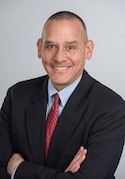 Bud Hammer is President of Atlantic Westchester, Inc., a commercial and industrial HVAC business located in Bedford Hills, N.Y.
Bud Hammer is President of Atlantic Westchester, Inc., a commercial and industrial HVAC business located in Bedford Hills, N.Y.

Every plumbing & heating contractor could give you a list of their favorite products to install or service but what goes into those installs? Here’s a walk-thru from The Hub’s Eric Aune, owner of Aune Plumbing & Heating, of a recent heating boiler installation, please take a look! https://youtu.be/Ot5NCm8JcMQ Read more
Every plumbing & heating contractor could give you a list of their favorite products to install or service but what goes into those installs?
Here’s a walk-thru from The Hub’s Eric Aune, owner of Aune Plumbing & Heating, of a recent heating boiler installation, please take a look!
